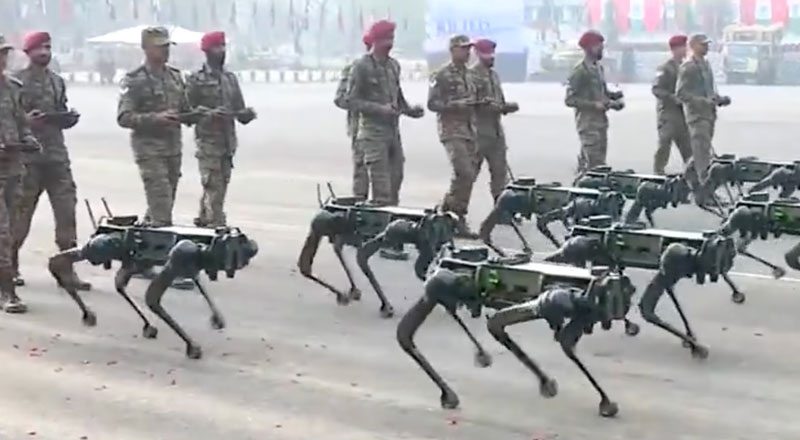A New Era in Indian Defence Manufacturing and Supply Preparedness
India’s defence production landscape has undergone a remarkable transformation over the past decade. From once being heavily dependent on imports, the country now produces nearly 65% of its defence equipment domestically, thanks to ambitious reforms under the ‘Make in India’ initiative. The government has also strengthened its civil supply and logistics structure, ensuring rapid deployment and replenishment in case of armed conflict. With rising tensions on the western front, India is now activating private defence manufacturers to scale up production of critical equipment and munitions, underlining the urgency of war preparedness.
Private Sector Roped In: Bharat Forge, Mahindra Among Key Players
The Ministry of Defence has directed leading private defence manufacturers — including Bharat Forge and Mahindra & Mahindra's defence division — to intensify production of munitions and tactical carriers. These orders go beyond regular supply schedules and are in addition to the output from India’s state-run ordnance factories. The immediate focus includes:
- Anti-drone and smart ammunition
- Armoured vehicles compatible with loitering munitions and guided missiles
- Enhanced production timelines for key weapons systems
Industry sources confirm that these private vendors may be called in for follow-up meetings to streamline production goals and align supply chains for priority deliveries.
Bharat Forge: Expanding Advanced Artillery Capabilities
Pune-based Bharat Forge is among the most critical contributors to India’s artillery modernization. Its Jejuri facility is a hub for manufacturing guns, mobility platforms, and integrated defence systems. Earlier this year, Bharat Forge signed a landmark contract with the MoD to supply 184 Advanced Towed Artillery Gun Systems (ATAGS), a flagship product of India’s indigenous defence R&D efforts.
The ATAGS, co-developed with DRDO, is a 155/52 mm calibre gun system capable of firing up to 48 km. Its all-electric drive system reduces maintenance burdens compared to hydraulic systems, while its mobility (18 kmph) and firing rate (six rounds) are significant upgrades over traditional towed artillery. Notably, it uses existing ammunition, reducing dependency on new production lines.
Mahindra: Urban Warfare and Mobility Solutions
Mahindra Defence, a licensed arms manufacturer, has become a key player in India’s urban and border defence ecosystem. The company produces both armoured and non-armoured military vehicles, including:
- Rakshak – A military utility vehicle suited for rugged terrains
- Marksman – Designed for urban combat and counter-terror operations
Mahindra also holds licenses for manufacturing small arms and compatible ammunition, complementing India’s short-range, rapid-response needs in tense border zones.
Strategic Focus: Anti-Drone Ammunition and Local Sourcing
Amid rising concerns about drone warfare, the Indian Army issued a Request for Information (RFI) to manufacture 23mm anti-drone ammunition. This is being managed under the ‘Make in India’ banner by the Directorate General of Army Air Defence. The demand reflects India’s changing threat matrix, especially with Pakistan increasingly deploying tube-launched drones and other aerial assets.
India’s overall defence production touched a record ₹1.27 lakh crore in FY24, with the private sector accounting for 21% of this output. The domestic ecosystem now comprises over 430 licensed private firms and 16,000 MSMEs, working alongside 16 public sector units.
India Shifts Gears for Rapid Military Readiness
The call to step up production by private defence players is a clear signal: India is preparing for a potential extended conflict. By activating its dual military-industrial engines — public and private — the government aims to ensure rapid deployment, diversified sourcing, and uninterrupted supply chains. This move not only strengthens operational readiness but also reinforces India’s long-term vision of self-reliance in defence.
In the face of escalating threats, India's preparedness is no longer just reactive—it’s strategic, self-sustained, and mobilized for decisive action.
(With agency inputs)






















